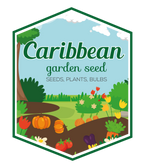
The Easiest Way to Grow Herbs In Containers
Growing herbs in pots is favored and practical due to their easy maintenance with fewer weeds and pests. Nearly any herb can thrive in a container, but when mixing, group plants based on water, light, and soil needs. With proper conditions, plants will flourish, providing fresh herbs at your disposal.
Planning Your Herb Container

Multiple herbs can coexist in a single container when their sun, water, and soil requirements align. For instance, rosemary thrives in hot, dry conditions, contrasting with parsley's preference for consistent moisture. Hence, they are not ideal companions in a shared pot.
Herbs can function as ornamental components in a container garden, providing texture and fragrance when combined with annuals or perennials with comparable requirements. Assess herbs with robust growth patterns to prevent them from overpowering other plants in the container.
Select the Perfect Container for Your Herbs
For an herb container, use anything with good drainage. Most herbs have small roots and fit in small containers, especially those tolerating dryness. But smaller containers mean less soil, leading to less room for watering errors.
Herb Planting Tips

Location: Herbs grow best in at least six hours of sunlight a day. They can tolerate less than ideal conditions, but they don't like wet soil.
Spacing: When planting herbs, space them a hand's width apart. Perennial herbs need room to grow, so they may look bare at first.
Soil: Herbs don't need very fertile soil, and over-fertilizing can make them less flavorfulAssist your container herbs in flourishing with suitable soil, sunlight exposure, and fertilizer. Employ a premium potting mix that promotes proper drainage. This soil, in conjunction with the drainage openings in your container, will aid in averting unintended drowning of your herbs.
Be careful not to over-fertilize your herbs. Most herbs don't need much fertilizer, and some plants will die if they are overfed. Plus, certain herbs such as thyme and oregano, thrive on neglect and often aren't as tasty if given too much food or water.
Harvesting Your Herbs
The rule of thumb for harvesting herbs is to snip and pinch back often. Consistent harvesting will encourage the plants to branch and fill out, which increases your overall harvest. Here are more harvesting tips:
- Understand your herbs: Adapt your harvesting to the plant's growth pattern and avoid exceeding one-third of the plant during the growing season. For instance, basil leaves should be harvested routinely, and the flower buds should be eliminated, while the basil plants should not be pruned completely.
- Understand edible components: Some herbs, like chives and dill, have edible flowers and seeds. Others, such as oregano and basil, develop bitter leaves if they flower. After flowering and seeding, a plant completes its seasonal growth cycle and stops producing new growth.
- Overwinter: Bring in most herb containers at the end of the growing season if you have ample indoor sunlight. Some herbs are easier to maintain indoors during winter, but it's worth a try for all container herbs.
- Share surplus herbs: Create themed herb container gardens like a 'pizza' or Herbs de Provence garden. Arrange herbs and edible plants in a basket or a vase for an herbal bouquet.
- Dry herbs like oregano, sage, rosemary, and dill. Store in lidded containers away from sunlight for year-round use.

-
HERBS FAQ
Basil and oregano thrive together in full sun with well-draining soil when spaced appropriately.
Lavender can be especially difficult to grow from seed in many regions because they may not germinate. Mediterranean herbs such as rosemary and thyme can be hard to grow in the wrong soil, for example, dense clay soil.

![[Seeds] - Caribbeangardenseed](http://caribbeangardenseed.com/cdn/shop/files/gift-card-gift-card-1_1024x1024_dfa857db-9150-4315-a362-7f0bb3fb9c47_60x28.png?v=1722895789)